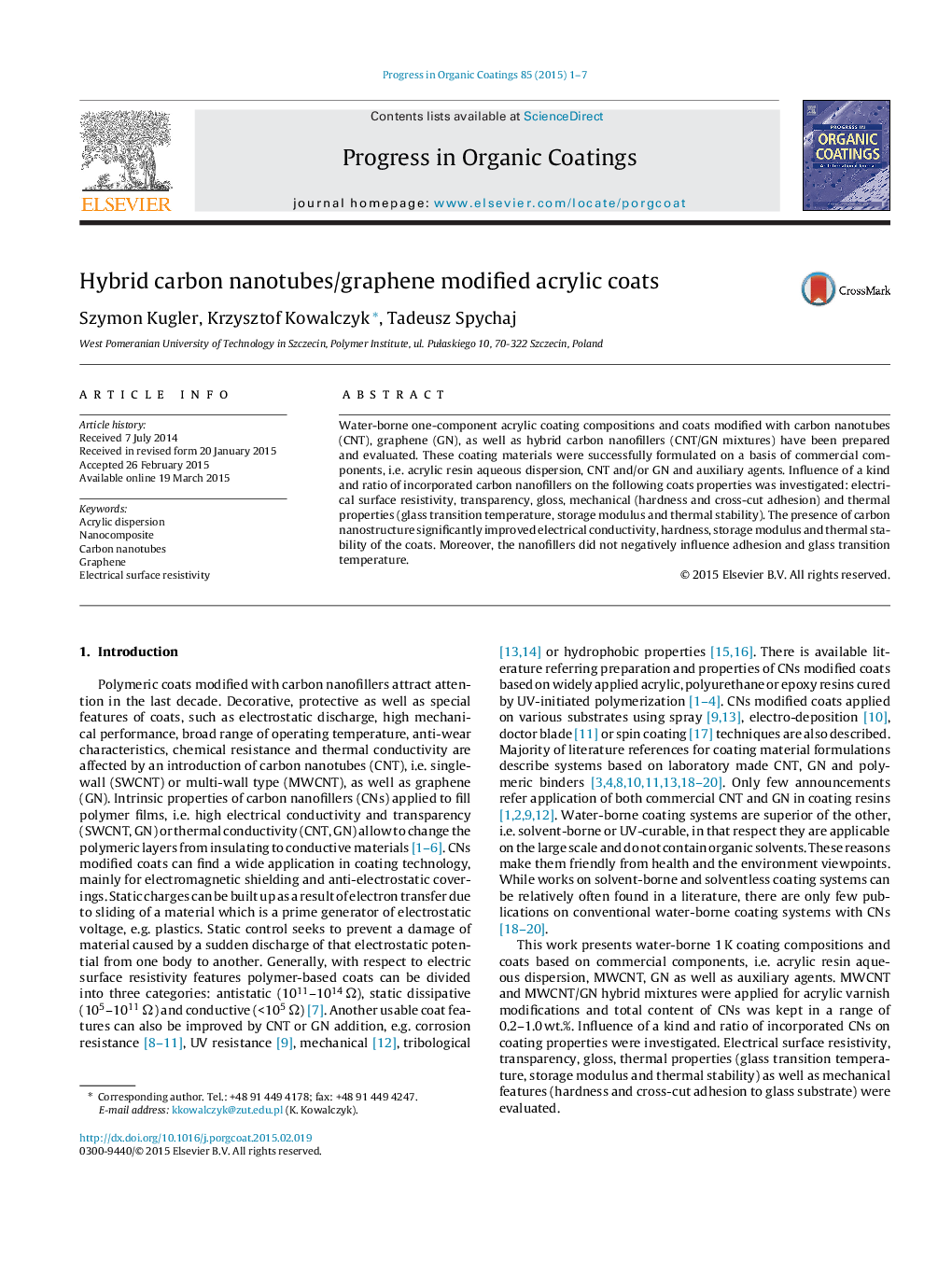| Article ID | Journal | Published Year | Pages | File Type |
|---|---|---|---|---|
| 692338 | Progress in Organic Coatings | 2015 | 7 Pages |
•Water-borne acrylic coating compositions filled with carbon nanotubes and/or graphene.•Carbon nanofillers affect electrical, optical, mechanical and thermal properties of the acrylic coats.•Hypothesis of an influence of carbon nanofillers addition on thermal stability of acrylic coats was presented.
Water-borne one-component acrylic coating compositions and coats modified with carbon nanotubes (CNT), graphene (GN), as well as hybrid carbon nanofillers (CNT/GN mixtures) have been prepared and evaluated. These coating materials were successfully formulated on a basis of commercial components, i.e. acrylic resin aqueous dispersion, CNT and/or GN and auxiliary agents. Influence of a kind and ratio of incorporated carbon nanofillers on the following coats properties was investigated: electrical surface resistivity, transparency, gloss, mechanical (hardness and cross-cut adhesion) and thermal properties (glass transition temperature, storage modulus and thermal stability). The presence of carbon nanostructure significantly improved electrical conductivity, hardness, storage modulus and thermal stability of the coats. Moreover, the nanofillers did not negatively influence adhesion and glass transition temperature.
